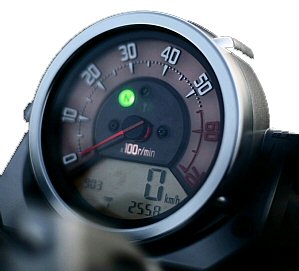How to match revs
 Many of us have heard that blipping the throttle on a motorcycle while shifting is the coolest, and bestest way to make gearshifts. Especially if you're heading down the 'box, right? And the section on 'why blip' always says the same thing: match the revs, right? From my own personal experience, I have discovered (or invented, for those who already know) that this match the revs bit is a bit of black magic. The explanatory text usually muddles up and down between the revs in the higher gear and the revs in the lower gear and so forth. So at the end, you know you need to blip, but not entirely sure why. Although even numpties instantly feel the slicker shifts. So here is the demystification.
Many of us have heard that blipping the throttle on a motorcycle while shifting is the coolest, and bestest way to make gearshifts. Especially if you're heading down the 'box, right? And the section on 'why blip' always says the same thing: match the revs, right? From my own personal experience, I have discovered (or invented, for those who already know) that this match the revs bit is a bit of black magic. The explanatory text usually muddles up and down between the revs in the higher gear and the revs in the lower gear and so forth. So at the end, you know you need to blip, but not entirely sure why. Although even numpties instantly feel the slicker shifts. So here is the demystification.
Let's say you're doing about 3000 rpm in fourth gear, when you feel the need to shift into third gear. The need could be arising from a potential overtake opportunity, a need for more acceleration or just because you are about to stop. So you blip the throttle, match revs and shift down. What you're doing is this. 3000 rpm in fourth gear, for a given motorcycle will equal, say 4500 rpm in third. The blip will raise the revs to say about 6000 rpm (if it hits 9000, you're definitely overdoing it). Seriously good throttle control will allow you blip lower, say 5000 rpm. As the revs rise, you pull the clutch in, click the shifter (down on most bikes, up on some). The idea is that the clutch should disengage (drive should be restored) at roughly 4500 rpm. This will allow the rear wheel to hook up smoothly without locking up, or jerking you in the saddle. What you did by releasing the clutch at 4500 rpm was, you matched the revs! And while the explanation seems fairly long, this process takes mere milliseconds when you get it right. There are bad habits that creep in. I've noticed myself blipping as many as seven times in a four gearchange sequence because it sounds cool. Or because I'm not paying as much attention as I should. But it's a minor transgression. Also, if you're going from fourth to first in a hurry, every successive blip must be more aggressive than the last one, since the revs in the lower gears will be significantly higher. Don't worry, momentary rises in revs don't cause the engine any harm.
Are you about to write a comment about matching the speeds of the input and output shafts? Don't. I didn't go down that route because many of us would just get confused, which would defeat the purpose of this post.
Once you can blip and shift right, you can actually go down the gearbox without using the clutch at all. The shifts can be as smooth as they would be if you had used the clutch. However, while clutchless upshifts don't harm sequential gearboxes, downshifts do impose undue stresses on the gearbox, so don't.





















2 comments:
Is this a good technique for breaking in bikes. I plan to buy a Gladiator and what I thought was that doing hard revs is not advisable during the break in period.
No it is not. It is the best way to change gears. Hard revs per se are not a problem. Hard, sustained revs are a problem. There won't be any problem if you accelerate hard now and then.
Post a Comment